It can be challenging to stand out among other applicants in today’s job market. To have a successful job search, you must create a resume showcasing your experience and strengths. A CEO resume is an excellent way to showcase your leadership skills and potential as a future business leader. To create a strong resume that helps you get the interview, you must understand how recruiters and hiring managers read resumes. To do so, we’ve compiled this helpful guide on writing a CEO resume from start to finish. Apply these tips for creating an effective resume that gets you past the initial screening with hiring managers and third-party recruiters. After reading this guide, you will be equipped with everything you need to know about creating an excellent CEO resume.
CEO Resume Example
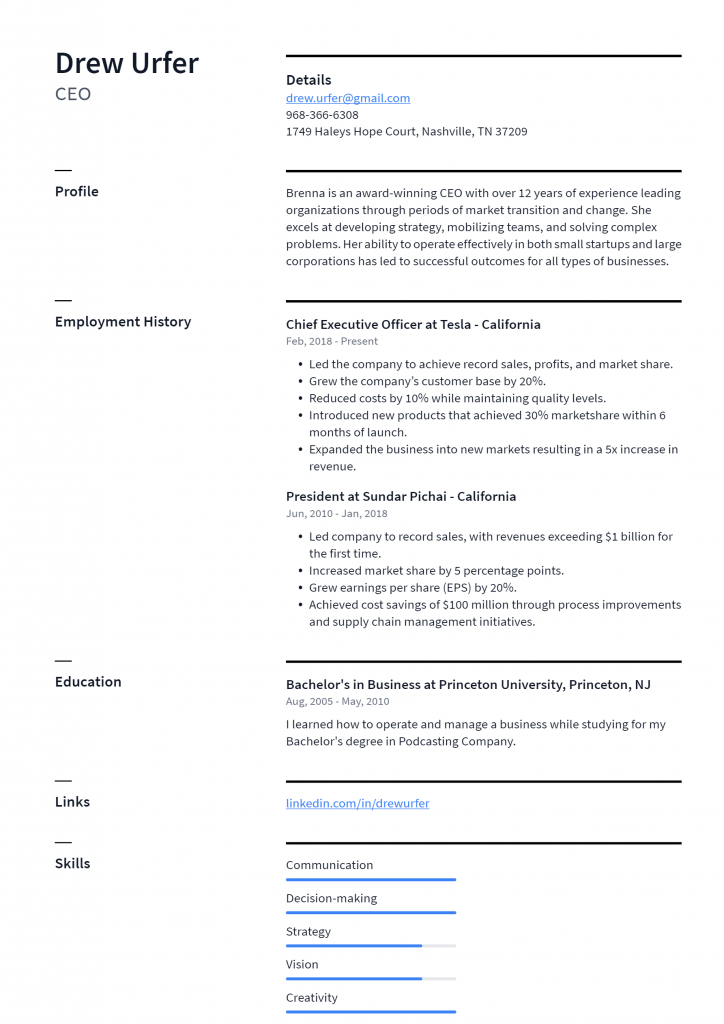
Download This CEO Resume as PDF
President Resume Example
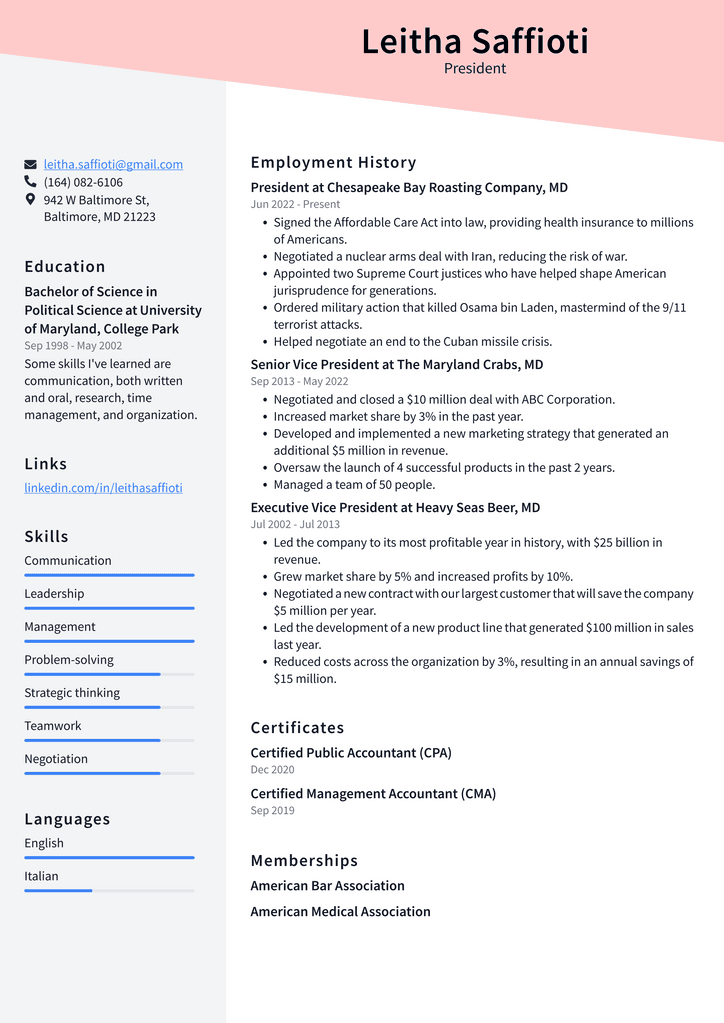
Download This President Resume as PDF
Chief Operating Officer Resume Example
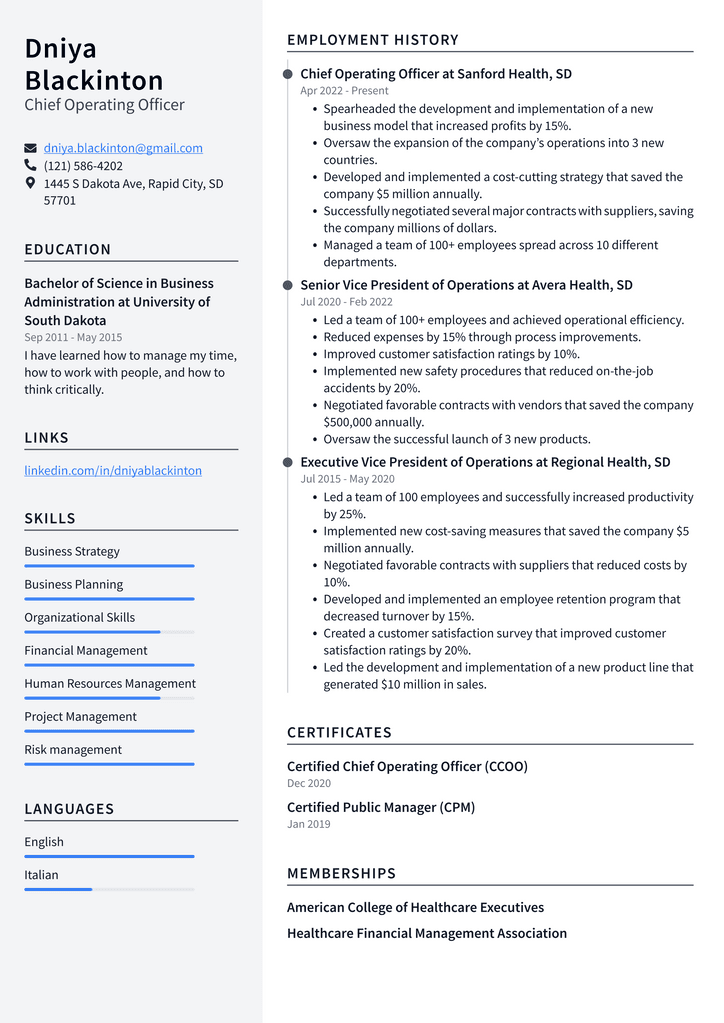
Download This Chief Operating Officer Resume as PDF
Executive Chairman Resume Example

Download This Executive Chairman Resume as PDF
Chief Technology Officer Resume Example
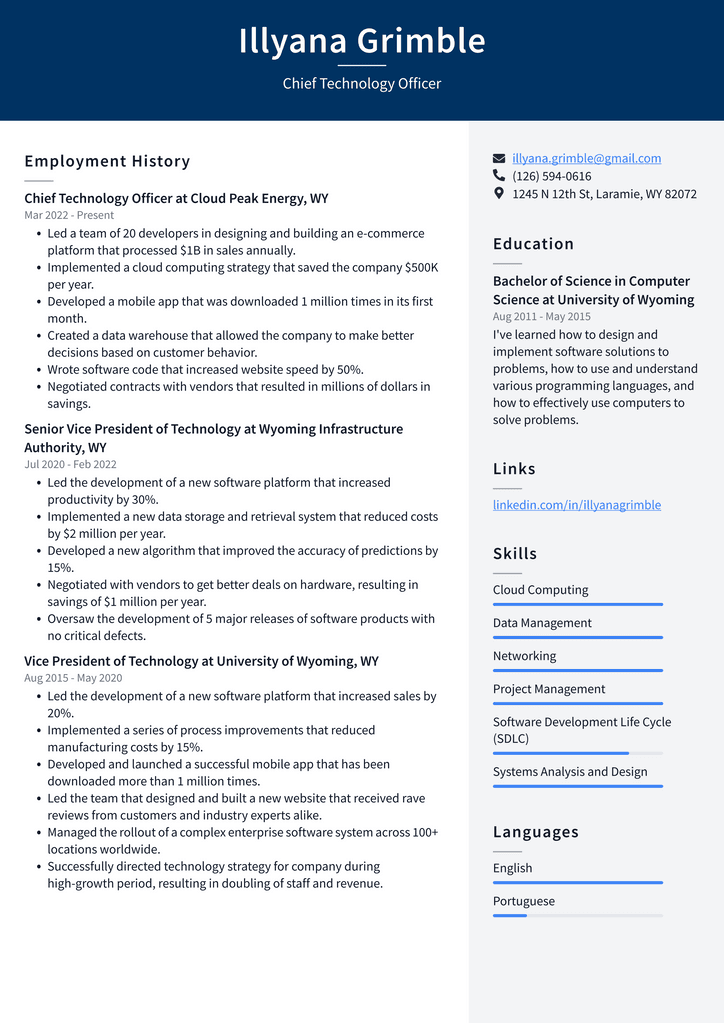
Download This Chief Technology Officer Resume as PDF
Chief Marketing Officer Resume Example
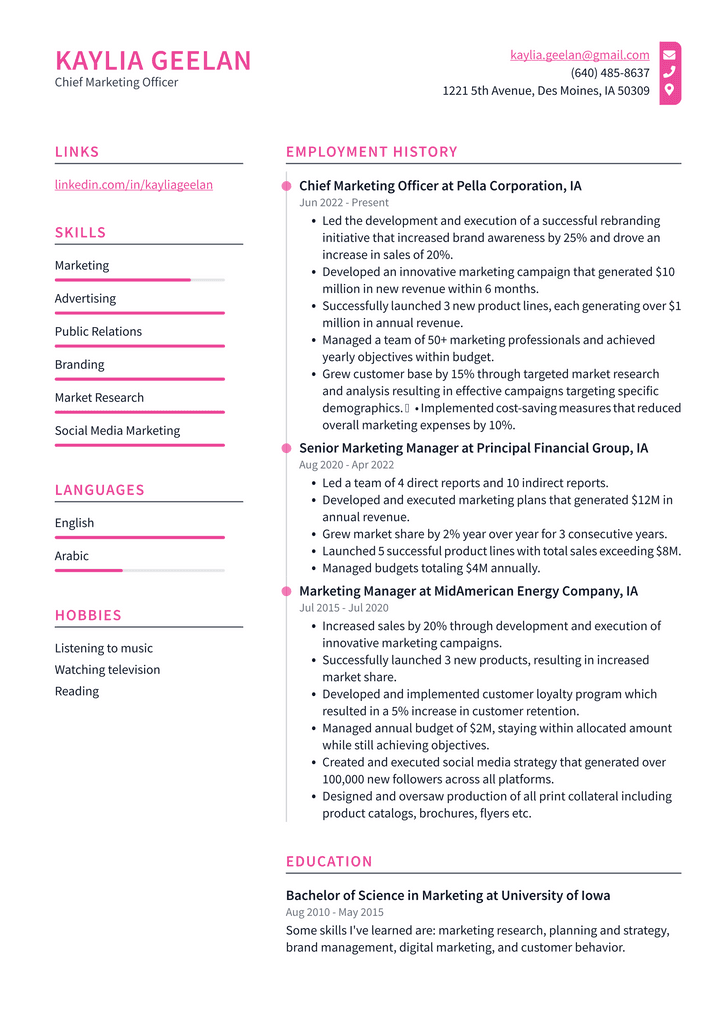
Download This Chief Marketing Officer Resume as PDF
Chief Financial Officer Resume Example

Download This Chief Financial Officer Resume as PDF
Resume Basics
There are several resume formats you can choose from when building your CEO resume. The reverse chronological resume format is one of the most common formats for executive and managerial level resumes. In this format, you will first list your most recent employment experience, followed by experience listed in reverse chronological order. While there are many formats to choose from, it is essential to use an appropriate form for your situation. Remember that your resume should take up no more than two pages. If your resume is longer than two pages, your hiring manager will likely skim it at best. You don’t want your resume to get pushed to the side because it is too long. Make sure to use appropriate font sizes on your resume as well. Your resume should be easy to read and large enough to be legible. You should use a font size no smaller than 10 points. Avoid using decorative or overly creative fonts. Your resume should be professional and straightforward. It should not draw attention to itself.
Identify your hiring manager and recruiter keywords.
When writing a CEO resume, you will want to focus on the hiring manager and recruiter keywords. Remember that your goal is to get your resume past the initial screener and into the hands of a hiring manager or recruiter. Therefore, you will want to include the keywords that hiring managers and recruiters are looking for in your resume. By having the keywords that hiring managers and recruiters use when searching for candidates, you can be confident that your overview will be found and read by those it is intended for. Search for job postings in your field to identify the keywords hiring managers are looking for. For example, if you are applying for a leadership role, search for CEO job postings. Take note of the skills, qualifications, and experience hiring managers ask for in candidates. You can also review the resumes of executives in your field. By understanding the keywords hiring managers and recruiters are looking for, you can ensure that your overview will be found by hiring managers and recruiters.
Organizational Overview
The organizational overview is an excellent place to begin your resume. In this section, you want to highlight your experience and qualifications. You should also briefly outline your career goals while summarizing your skills and abilities. This section is an ideal place to outline your career path to date briefly. Talk about the companies you have worked for, the positions you have held, and the accomplishments you have achieved at each stop along the way. By doing so, you can communicate your experience and qualifications to hiring managers. The organizational overview is also ideal for including a short description of your overall career goals. You can do so by briefly outlining your long-term goals and any relevant goals to the position you are applying for.
Professional Experience
The following section on your CEO resume should be dedicated to your professional experience. In this section, you will want to list your past employment experience in reverse chronological order. You will want to list your most recent position first, followed by your previous employment. Be sure to include the company name, location, and dates of work for each class. Once you have listed your past positions, it is time to describe your responsibilities and achievements briefly. You will want to use the keywords and buzzwords hiring managers are looking for in this section. For example, if you led a team of sales representatives, you would want to include the words “leading” and “managing a team.” Finally, list all the skills and abilities relevant to the position you are applying for. This will help hiring managers understand how you can add value to their organization.
Summary of Skills
Once you have described your work experience, it is time to list your skills. In this section, you will want to list the skills relevant to the position you are applying for. While you want to use the same skills in the experience section, you will want to list them differently. You will want to list them both in bullet points and paragraphs. You can expand on each skill and provide greater detail by listing your skills in sections. This is an excellent way to showcase your skills prominently and concisely.
Education and Qualifications
This is another crucial section on your CEO resume. In this section, you will want to include your academic achievements. Include your degree and the institution from which you received a degree. You can also have any academic honors or other academic distinctions. This section will also want to list any relevant non-academic qualifications. Examples of non-academic qualifications that you may want to include on your resume include certification or licensure. As you are writing this section, it may be helpful to create a skills and abilities list. With your list of skills and abilities, you can more easily describe your academic qualifications.
Conclusion
The conclusion of your CEO resume is an excellent place to summarize the skills and abilities that you have listed throughout your resume. By doing so, you will leave the hiring manager with no doubt about your skills and abilities. This section is also ideal for briefly outlining your motivation for seeking a new job. You can do so by discussing why you are seeking a new job and what you hope to gain by making a career change. By briefly discussing your motivation for seeking a new job, you can communicate exactly what hiring managers are looking for in candidates. By following these tips for creating an effective resume, you will be well on your way to creating a great resume that helps you land an interview and, ultimately, the job you want. When writing a resume, it is essential to keep your hiring manager and recruiter keywords in mind. Doing so can create a resume that gets your foot in the door.